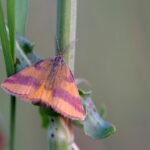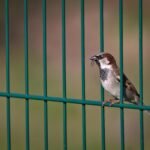How to Create a Small Pond in Your Garden to Attract Wildlife
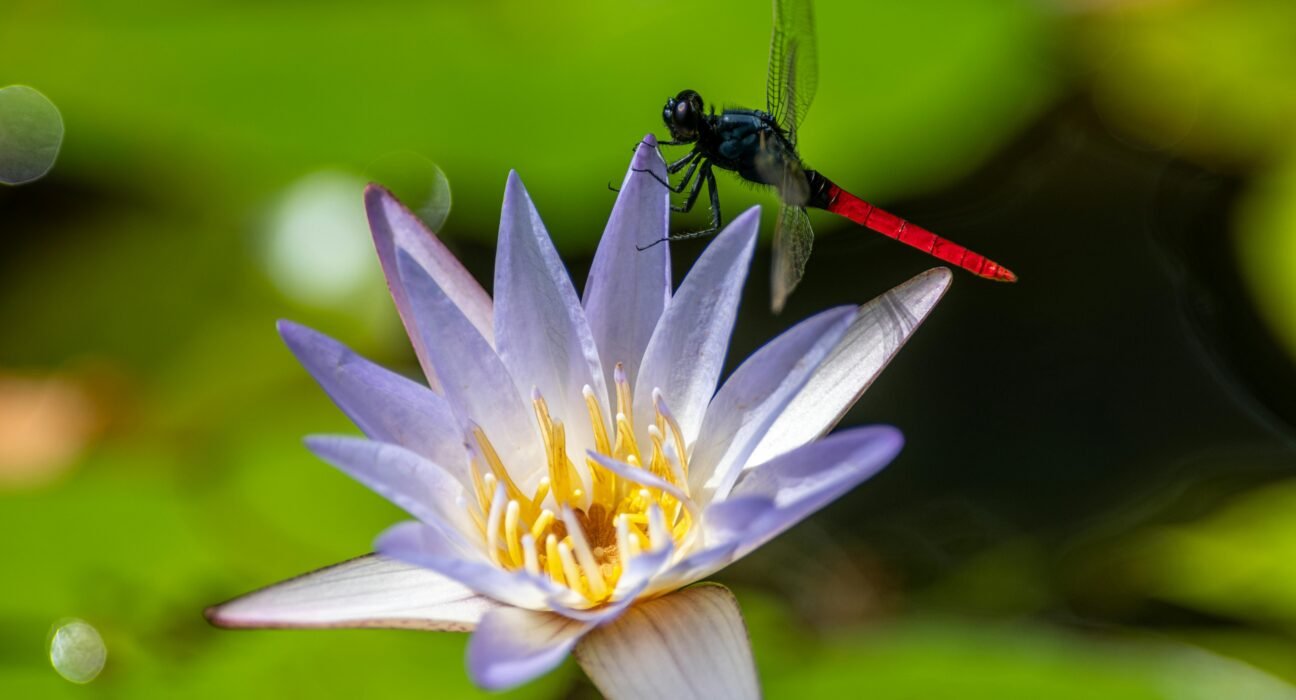
How to Create a Small Pond in Your Garden to Attract Wildlife
Creating a small pond in your garden is a rewarding project that not only enhances the aesthetic appeal of your outdoor space but also provides a haven for local wildlife. This guide is tailored for middle-aged individuals aged 40-55 in the United States, offering practical steps and insights into transforming your garden into a thriving ecosystem.
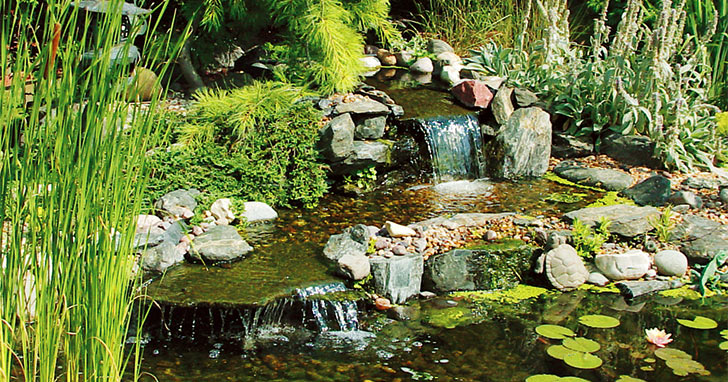
Introduction to Wildlife Ponds
Wildlife ponds are essential for supporting biodiversity, especially in urban environments where natural habitats are scarce. These ponds attract a variety of wildlife, including birds, amphibians, insects, and even small mammals, by providing them with water, food, and shelter .2 .3. By incorporating a small pond into your garden, you contribute to the conservation of local species and create a beautiful focal point for relaxation and enjoyment.

Benefits of a Small Wildlife Pond
-
Biodiversity and Conservation: Small ponds can support a surprising amount of biodiversity, helping to conserve species that are declining due to habitat loss .2.
-
Natural Pest Control: Attracting beneficial insects like ladybugs and lacewings can help control garden pests naturally, reducing the need for chemical pesticides .1.
-
Aesthetic Appeal: Ponds add visual serenity and soothing sounds to your garden, enhancing its tranquility and beauty .3.
-
Educational Opportunities: Observing wildlife in your garden can be a fascinating educational experience for family members, especially children .6.

Planning Your Small Pond
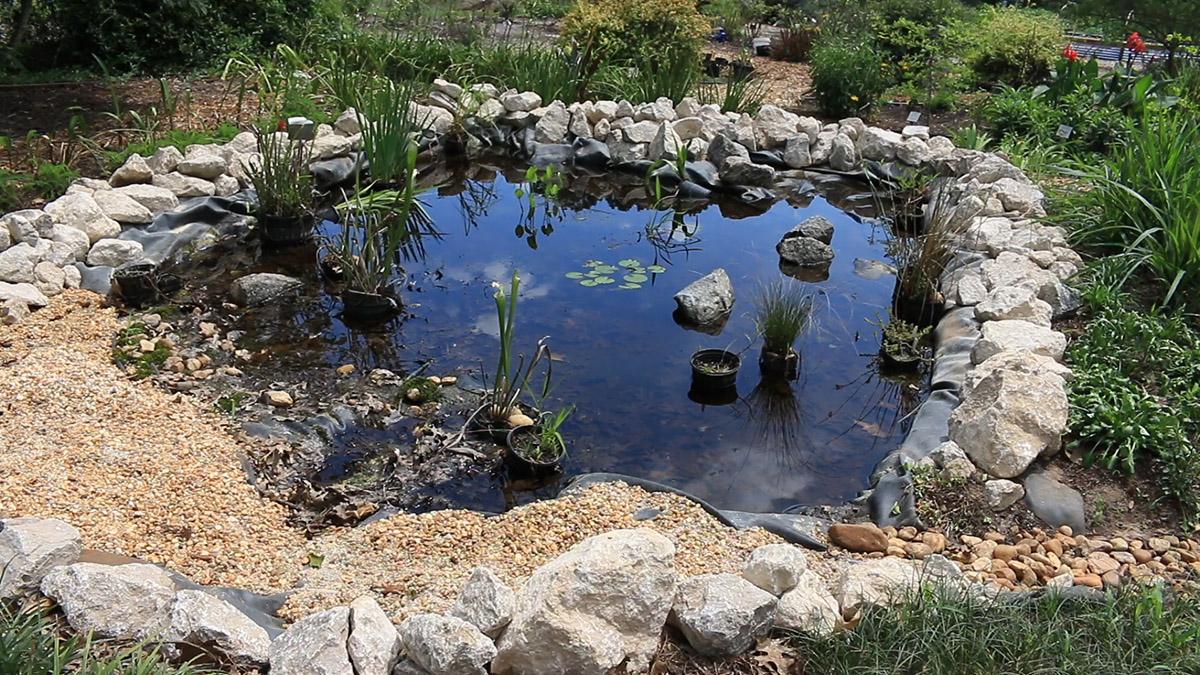
1. Choose a Location
-
Sunlight and Shade: Ensure your pond receives partial sunlight to promote plant growth but also has some shade to prevent excessive algae growth .4.
-
Accessibility: Place the pond in a spot that is easily accessible for maintenance and viewing pleasure .5.
-
Drainage: Avoid areas with poor drainage to prevent water accumulation around the pond .4.
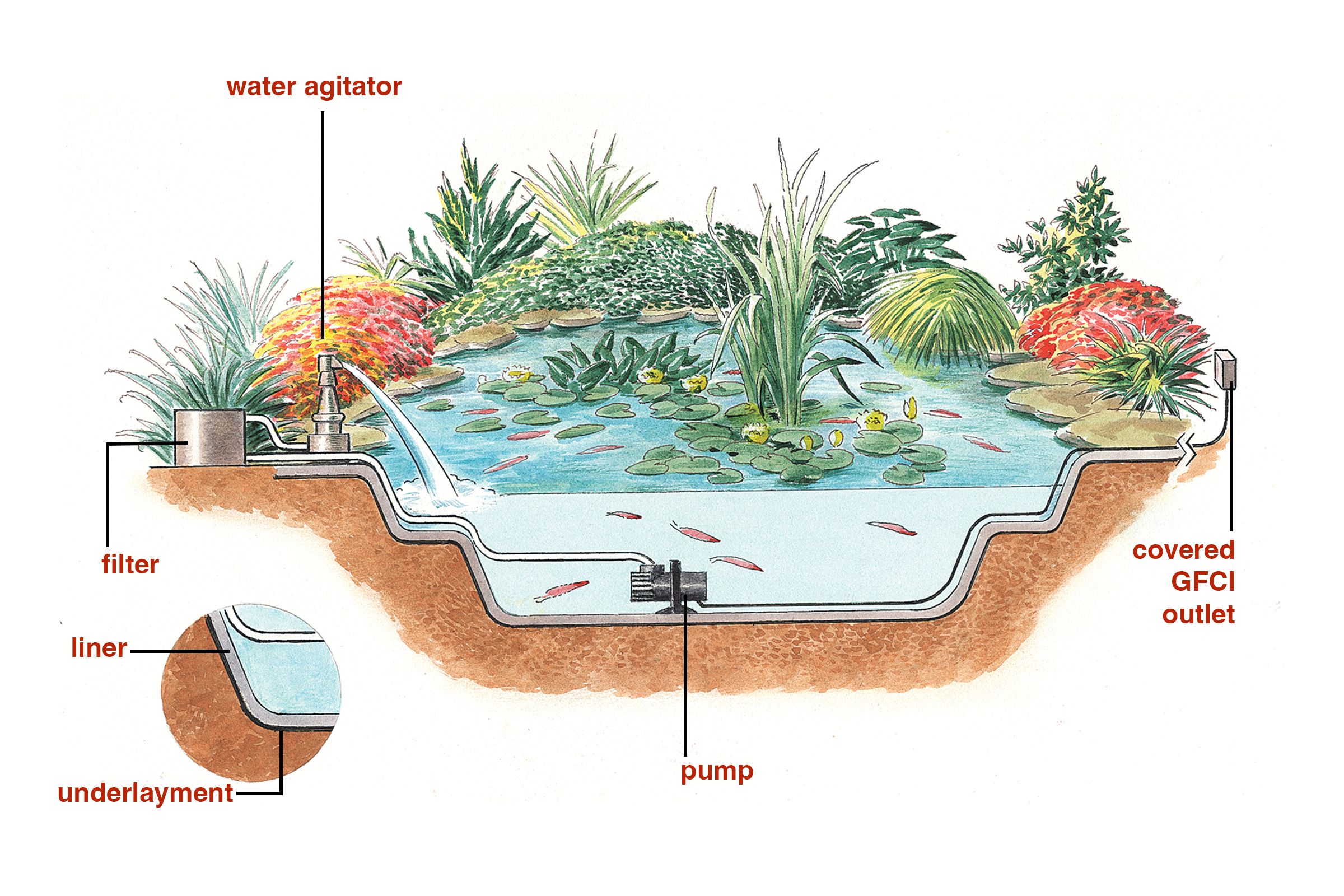
2. Determine the Size and Shape
-
Size: Even small ponds (as little as a few square feet) can be effective. Consider the space available and the type of wildlife you wish to attract .2.
-
Shape: While the shape is less important than depth and edge design, natural shapes often blend better with garden surroundings .4.
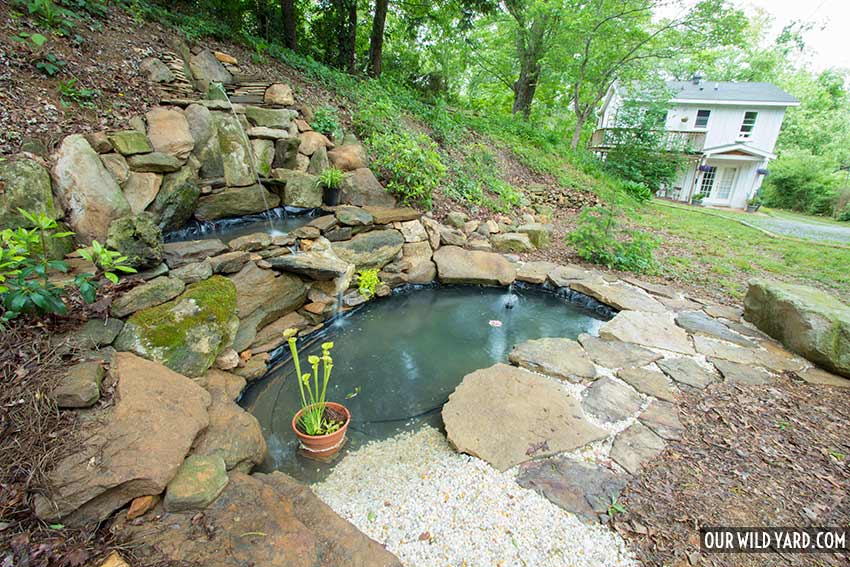
3. Plan for Depth and Edges
-
Depth: Include both shallow areas (less than 30 cm deep) for amphibians and slightly deeper areas for fish if desired .4.
-
Edges: Incorporate gently sloping edges to allow wildlife easy access in and out of the pond .3.

Building Your Small Pond

Step-by-Step Guide
-
Mark Out the Pond Shape: Use a hose or rope to define the pond’s shape before digging .4.
-
Remove Turf: Carefully remove the turf and set it aside for later use around the pond edges .4.
-
Dig the Pond: Dig to the desired depth, ensuring about 50% of the pond is shallow .4.
-
Level the Ground: Use a spirit level to ensure the pond is level to prevent water from running off .4.
-
Add Underlay and Liner: Lay down an underlay (such as old carpet) to protect the liner from punctures, then place the pond liner .5.
-
Secure the Liner: Use rocks or the saved turf to secure the liner around the edges .4.
-
Add Water: Fill the pond with rainwater or dechlorinated tap water to avoid harming wildlife .4.
-
Wait for Wildlife: Allow plants to colonize naturally or add native plants to enhance biodiversity .4.

Adding Plants and Features
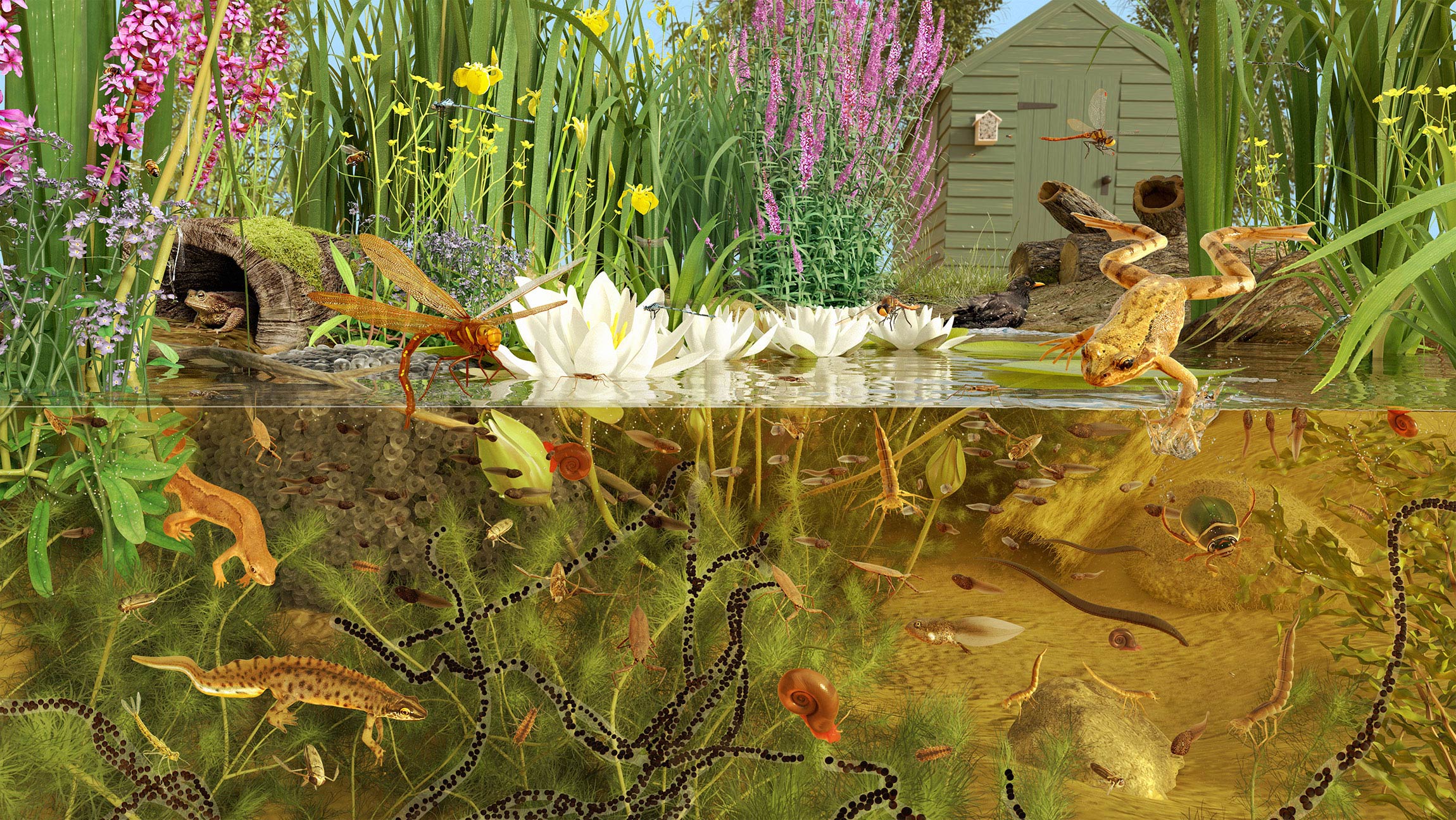
Plant Selection
-
Marginal Plants: Use plants like irises and cattails that thrive in shallow water .7.
-
Floating Plants: Add water lilies to provide shade and shelter for wildlife .7.
-
Submerged Plants: Incorporate plants like hornwort to support aquatic life .7.
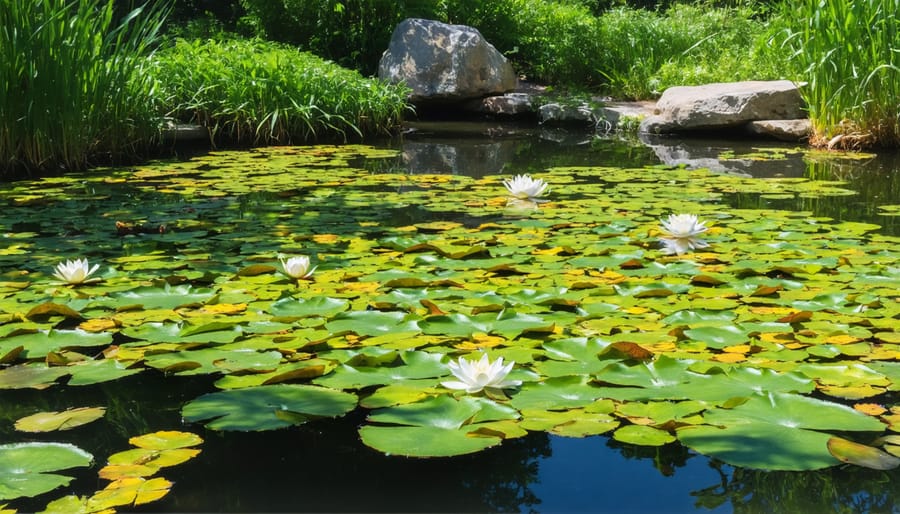
Additional Features
-
Rocks and Logs: Add rocks and logs for perching and basking sites for amphibians and birds .6.
-
Pump or Fountain: Consider adding a solar-powered pump or fountain to maintain water circul






